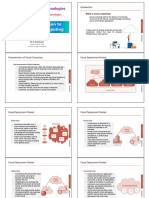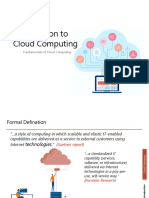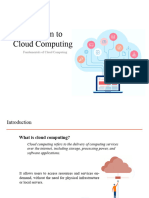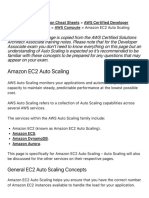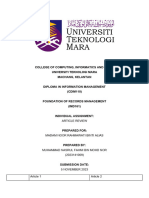0% found this document useful (0 votes)
44 views3 pagesM-17 Cloud Computing
Cloud computing delivers services like data storage and software over the Internet, allowing access from any device with web connectivity. It is important for cost savings, scalability, and improved collaboration, with various service types including IaaS, PaaS, SaaS, and FaaS, as well as deployment models like public, private, hybrid, and community clouds. Successful implementation involves assessing needs, choosing a provider, planning migration, ensuring security, and following best practices while adhering to ethical considerations.
Uploaded by
allofdev1212Copyright
© © All Rights Reserved
We take content rights seriously. If you suspect this is your content, claim it here.
Available Formats
Download as DOCX, PDF, TXT or read online on Scribd
0% found this document useful (0 votes)
44 views3 pagesM-17 Cloud Computing
Cloud computing delivers services like data storage and software over the Internet, allowing access from any device with web connectivity. It is important for cost savings, scalability, and improved collaboration, with various service types including IaaS, PaaS, SaaS, and FaaS, as well as deployment models like public, private, hybrid, and community clouds. Successful implementation involves assessing needs, choosing a provider, planning migration, ensuring security, and following best practices while adhering to ethical considerations.
Uploaded by
allofdev1212Copyright
© © All Rights Reserved
We take content rights seriously. If you suspect this is your content, claim it here.
Available Formats
Download as DOCX, PDF, TXT or read online on Scribd
/ 3










